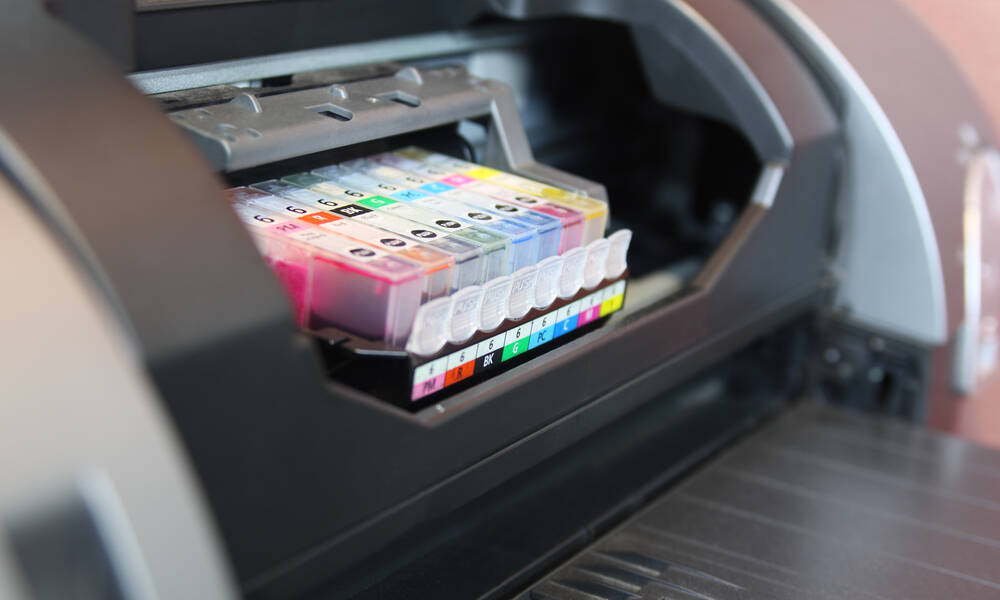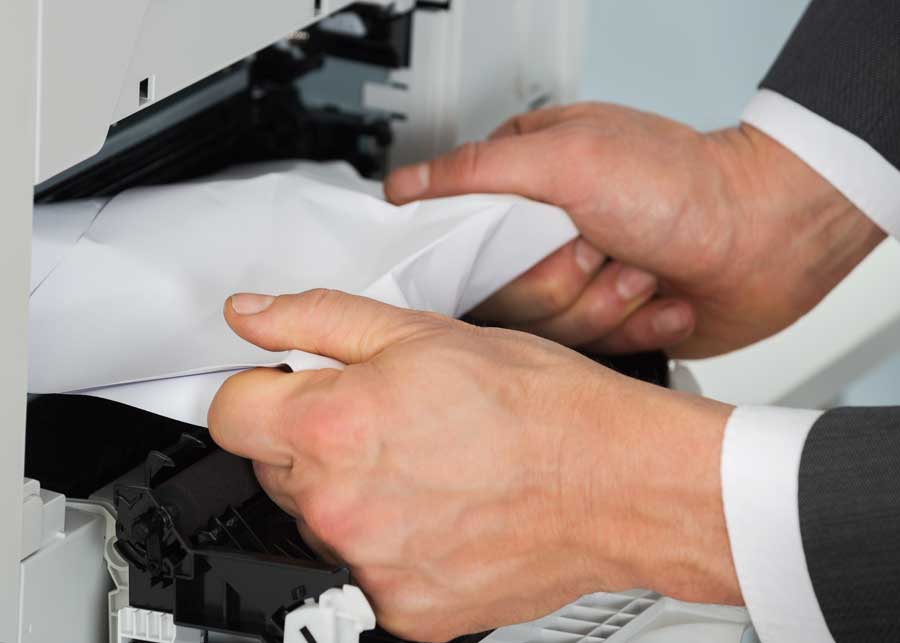Introduction
At Vigilant, we’re dedicated to digitizing the last mile of medication delivery. One critical aspect of this digital transformation is the replacement of handwritten labels used by clinicians with an automated solution. Vigilant’s solution prints automated labels that can easily be applied to a syringe or IV tube by clinicians in the OR, ED, PACU, ICU and beyond. The two prominent printing technologies utilized for this purpose are InkJet and Thermal printers. This article delves into the differences between these technologies and explains why thermal printing is the only choice for the future of medication labeling.
Contrasting Thermal and InkJet Printers
InkJet printers function by propelling tiny droplets of liquid ink onto the printing surface. This process takes up to 15-20 seconds per printing job and has multiple moving parts. While InkJet printers have been prevalent in home settings, they have significant limitations in the medical context.
Thermal printing technology offers a superior alternative for medication label digitization, ensuring accuracy, efficiency, and overall cost-effectiveness. Unlike their counterparts, Thermal printers do not rely on liquid ink, eliminating the risk of smearing and resulting in consistent print quality. The absence of moving parts in thermal printers also reduces the likelihood of mechanical failures, contributing to increased reliability and durability.
Reliability Concerns
The initial concern with InkJet printers is that they are far less reliable than their thermal counterparts. InkJet printers are more prone to clogging, resulting in inconsistent print quality and potential interruptions in the printing process. For medication-related labels, where accuracy is paramount, such reliability issues can lead to errors that jeopardize patient safety.
Additionally, the tiny droplets of liquid ink can smudge, or print in an incomplete fashion. Relying on a perfect spray from the nozzle only heightens the risk of incomplete or faulty results.
Imagine a scenario where time is of the essence, an emergency room or operating room for example. The idea that a clinician is relying on outdated technology prone to inconsistencies is hardly ensuring the best outcome for the patient.
The alternative is the thermal printer. Thermal printers bypass liquid ink, instead using heat to create images on labels. It operates on a straightforward and efficient principle, involving the application of heat to thermally sensitive paper or a thermal label to produce the desired output.
With far less moving parts and no ink involved, the reliability concerns of the InkJet printer simply do not exist with the thermal option.
Print Speed and Efficiency
InkJet printers have significantly slower printing speeds compared to thermal printers, which can hinder time-sensitive medical tasks and disrupt workflow efficiency.
Thermal printers, on the other hand, stand out for their exceptional speed and efficiency, making them an invaluable asset in time-sensitive medical environments. With the ability to produce labels rapidly, healthcare professionals can streamline workflows and allocate more time to patient care rather than waiting for labels to print.
In urgent situations, such as emergency or critical care scenarios, the swift generation of medication labels becomes paramount. Thermal printers excel in meeting these demands, ensuring that vital medications are administered promptly and accurately. By reducing the waiting, and in some cases correction time for labels, medical facilities can enhance overall operational efficiency and optimize patient outcomes.
Moreover, in busy healthcare settings, where rapid turnover of patients is common, the quick and reliable label printing offered by thermal printers significantly contributes to the seamless flow of medical procedures, minimizing potential delays and maximizing healthcare productivity.
Cost Considerations
The cost comparison between InkJet and Thermal printers reveals the significant financial advantages of adopting thermal printing technology in medical device labeling.
Thermal printers have a more straightforward design with fewer moving parts, which translates to reduced maintenance and repair expenses over time.
In contrast, InkJet printers often require regular maintenance to address issues like clogged nozzles, printhead replacements, and ink cartridge refills, all of which contribute to higher ongoing costs.
One of the most significant cost-saving aspects of thermal printers is the absence of ink cartridges. InkJet printers rely on expensive liquid ink cartridges, and the ongoing need to replace these cartridges can quickly escalate costs, particularly in high-volume printing environments.
Thermal printers use thermal paper, which is more economical and readily available, making it a cost-efficient printing medium. This lack of ink cartridges also reduces waste, benefiting both the environment and the medical facility’s disposal costs.
In medical facilities with moderate to high printing volumes, the higher printing speed and efficiency of thermal printers results in substantial cost savings over time. Thermal printers can rapidly produce large quantities of labels without compromising on print quality, ensuring that medical professionals have a constant supply of accurate and legible medication labels.

Thermal Printers Are the Future
The total comparison between InkJet and Thermal printers clearly favors the adoption of thermal printing technology for medical device labeling solutions of the future.
While InkJet printers may appear more affordable at first glance, their reliability concerns, ongoing expenses, and higher maintenance requirements render them a less economical choice in the long run.
Thermal printers not only offer higher efficiency and reliability, but they also significantly reduce consumable costs, making them the financially prudent option for medical facilities seeking a reliable and cost-effective solution for digitizing medication labels. The long-term benefits of thermal printers ensure improved patient safety, streamlined healthcare workflows, and optimal resource allocation, positioning them as the clear choice for the future of medical device labeling.
